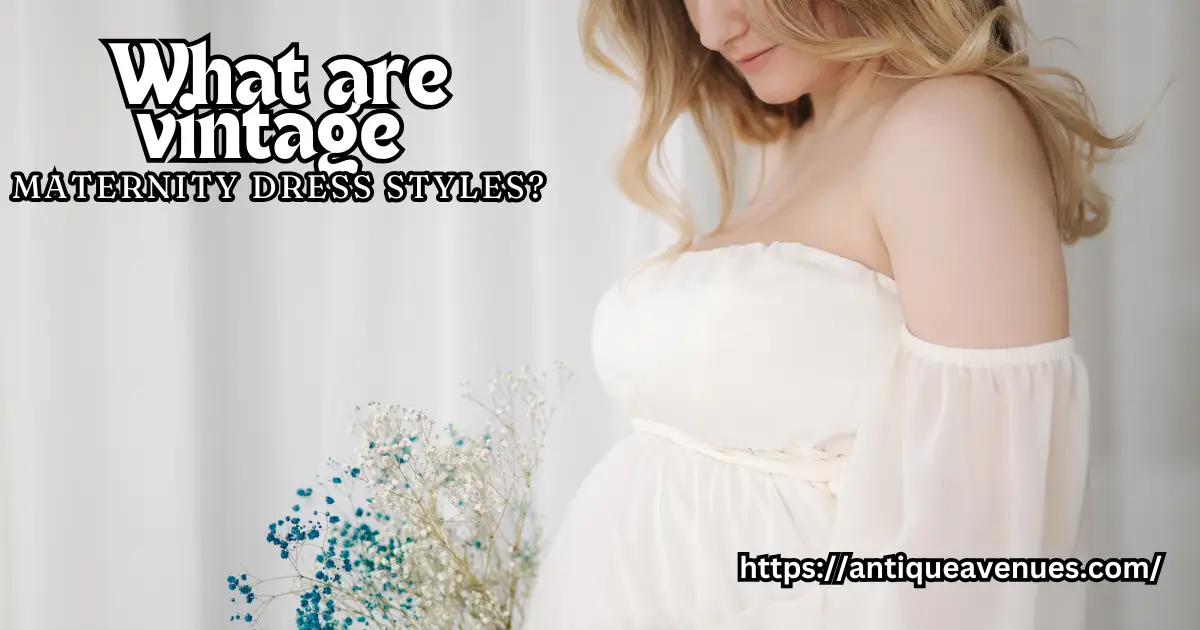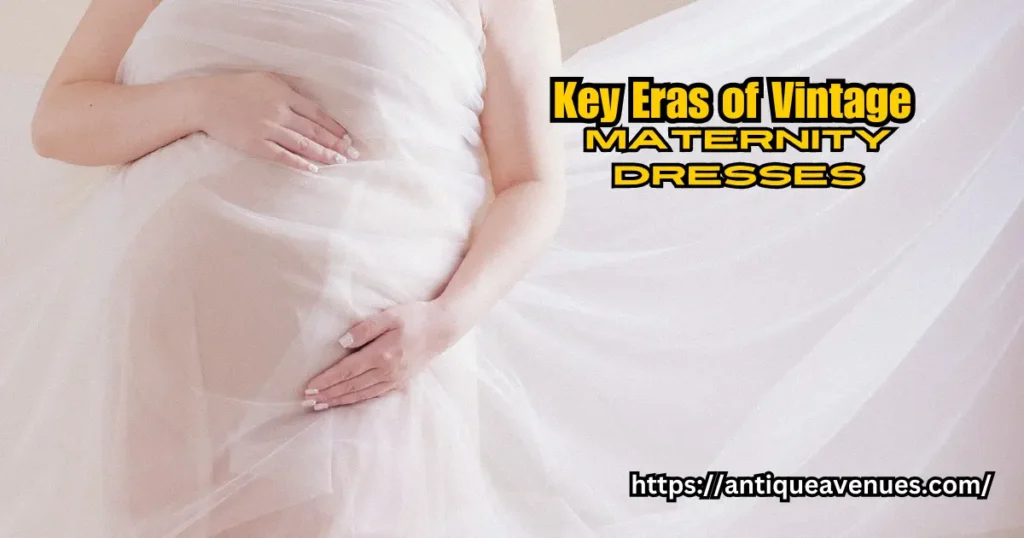What are vintage maternity dress styles?

The phrase “vintage maternity dresses” describes childbirth attire from the early 1900s to the 1980s, with female accents, stiff patterns, and a timeless aesthetic. The flowing cuts, adjustable embellishments, and modest but stylish tailoring of vintage maternity design differ from contemporary maternity apparel, which typically comprises body-hugging fabric. In the initial years, the absorption would sometimes be discreetly hidden before being accepted, with more fashionable and gorgeous clothing representing the social habits of their day.
The special production, sentimental appeal, and ecological appeal of vintage maternity clothes are the factors for their present emergence. Many expectant mothers go for antique items instead of mass-produced modern maternity clothing because they value the beautiful details, premium materials, and unique shapes that characterize these pieces.
Key Eras of Vintage Maternity Dresses

1900s–1920s: Edwardian and Flapper-Inspired Styles
The maternity dresses were created in the early 1900s to discreetly conceal a growing baby’s belly and preserve a woman’s dignity. Empire waistlines, which enable the fabric to drape elegantly over the tummy, and loose-fitting, high-waisted clothes were the hallmarks of Edwardian maternity fashion. The used ribbons, beautiful lace, garments, and tapestries were made of soft cotton and linen.
The straight shapes and low waistlines that provided ease without exposing the baby were characteristics of the advent of flapper-inspired maternity layouts. The beverage dresses with tiered lengths and smocked garments were popular styles that provided both style and functionality.
1930s–1940s: Practical and Wartime Adaptations
The maternity fashion and subsequent 1929 financial crisis had been affected by World War II, which led to more sensible and reasonably priced designs. These dresses often included changeable buttons, wrap styles, and components removable for greater wear due to fabric scarcity. Belted waist shirtdresses became popular since they looked put together but still cozy.
The clothes were lined with pinafore-style aprons for safety and ease of adjustment as the body evolved. The versatility was emphasized, and most garments were made to be used before, during, and after childbirth.
1950s–1960s: Feminine and Structured Designs
The period following the war revived maternity fashion’s elegance and glitz. Fitted bodices, long skirts, and delicate stretch panels were all common in 1950s and 1960s dresses to fit expanding bellies. The pastel hues and colorful designs like stripes and flowers were popular options.
The shirtwaist dresses with flexible ties and swing dresses with nipped waists were popular because they provided a sophisticated and relaxed silhouette. The developers moved toward more fashionable maternity wear, which accepted more than concealed a woman’s changing physical appearance.
1970s–1980s: Bohemian and Bold Trends
The boho style trend, the 1970s saw the introduction of flowing maxi skirts with empire waists. Maternity wear has been characterized by knit fabrics, wrap trends, and loose, airy styles. The major developments were peasant-style elements, patterns of flowers, and earthy hues.
The maternity fashion during the 1980s was more daring, featuring geometric prints, vivid hues, and even disco-inspired accents. A fun twist on baby clothes is offered by jumpsuits, elasticated-waisted tunics, and massive bows.
Characteristics of Vintage Maternity Dresses
Silhouette and Fit
The vintage maternity gowns were made with characteristics that could be adjusted to fit a woman’s changing body type. The fabric fell over the belly; empire waistlines, which sit just below the breast, were a popular choice. The flexibility of utilizing wrap-style closures and covert developing seams for flared skirts and also compatibility with proportions.
Fabrics and Patterns
Natural fibers like cotton, linen, and wool have been used for their comfort and breathability. Lace furnishings, gingham, polka dots, and petal prints were used to impart a feminine touch. Most particularly for spring and summer designs, complex fabrics like lace and eyelets were also in style.
Functional Design Elements
Many vintage maternity dresses include practical details like
- Adjustable buttons or ties for a customizable fit.
- Expandable side panels are hidden beneath decorative pleats.
- Layered skirts or detachable collars for versatility.
These elements ensured that the dresses could be worn throughout pregnancy and beyond.
How to Style Vintage Maternity Dresses Today

Accessorizing for a Retro Look
Accessorize a 1950s-inspired maternity dress with pearl necklaces, a headscarf, and cat-eye sunglasses to add to the retro look. The maxi dress with ankle boots and a sloppy bonnet for a 1970s look. A different method to express moving curves is with chunky belts worn over the bump.
Modern Twists on Vintage Styles
Modern and antique objects can be combined to create the newest look. Wear a 1940s shirtwaist dress with a jacket made of denim, for instance, and an A-line dress from the sixties with stylish ankle boots. The pairing of vintage jewelry with modern, minimalist pieces maintains the outfit’s delicate balance.
Where to Find Vintage Maternity Dresses
The thrift stores, vintage boutiques, and internet markets such as Etsy and eBay provide excellent venues to find original things. The small modifications, some common vintage dresses—particularly models with wrap patterns and empire waists—can also be used as baby attire.
Conclusion
The maternity gowns from the past provide a special fusion of style, coziness, and sustainability. These classic styles offer useful options for pregnant dressing and honoring femininity. These looks enable pregnant women to embrace retro fashion with a modern edge, which means they are converted from normal vintage collections and bought from thrift stores. The average person may create an eye-catching, vintage-inspired maternity outfit by trying on accessories and matching different eras.




One Comment